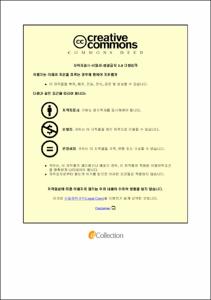초등학교 창의적 체험활동 활성화를 위한 애니메이션 학습 프로그램 개발 연구
= A Study in Animation Learning Program Development for Elementary School Creative Experience Activity Activation : Focused on Pixilation Animation Production Study
- Type
- Thesis
- Alternative Title
- 픽실레이션 애니메이션 제작 학습을 중심으로
- Department
- 대학원 미디어디자인학과
- Issued Date
- 2016
- Publisher
- 한성대학교 대학원
- Files in This Item:
-
-
Download
 000002294955.pdf
기타 데이터 / 11.04 MB / Adobe PDF
000002294955.pdf
기타 데이터 / 11.04 MB / Adobe PDF
-
Items in Repository are protected by copyright, with all rights reserved, unless otherwise indicated.